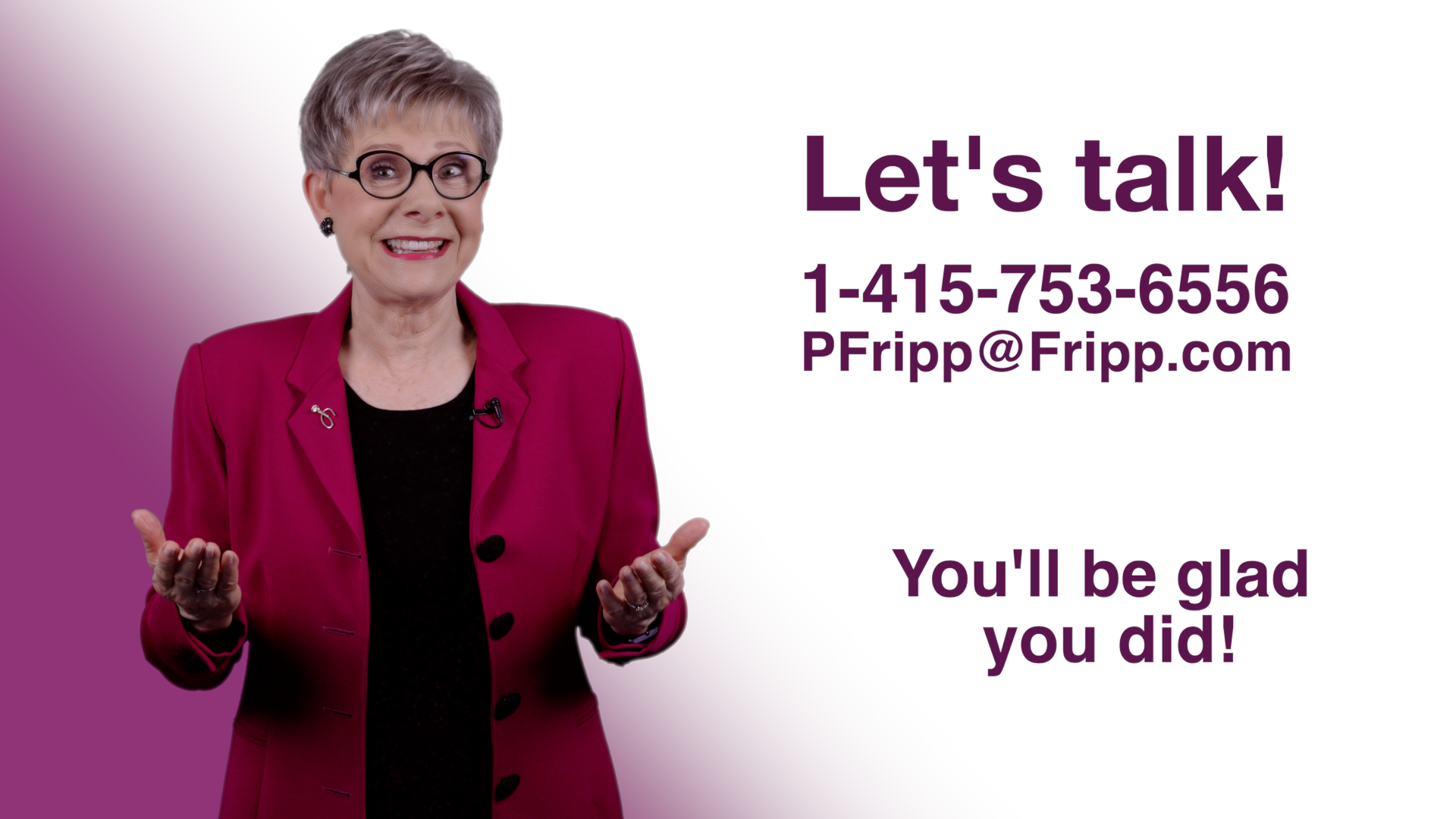Welcome to part four of a four-part series on the best formula for a presentation closing that resonates.
3 • “The End-of-the-Story Close”
This closing technique involves a story that’s told early in the speech, maybe even in the opening. As far as the audience is concerned, the story has a successful conclusion. In the closing, you reveal one more detail about the story, in effect revealing the next and concluding scene of the story.
Here’s an example from my good friend Hall of Fame speaker Tony Alessandra’s presentation on customer service. He opened with a story about a frustrating experience dealing with calling an airline for the second time, only to find that the cost of his ticket was now $600 more than 30 minutes before. He heard, “Sir, there is nothing I can do for you. The only suggestion is you could call the president of the airline” Case closed This was a very satisfying conclusion to the story. 45 minutes later, after his review, challenge, call to action, and Q and A, the audience loved his message. He then took two steps forward and said, “So, I called the president of the airline and said . . .” Everybody laughed because by now their mind was no longer on the opening. This was an effective use of the “End of The Story Close.”
4 • “A Perspective-Changing Close”
This closing prompts the audience to think differently about a situation, others, or themselves. World Champion Mark Brown uses this technique in his presentation ‘Stronger Together’ as he discusses various roles and responsibilities within an organization. During the presentation, he acknowledges that some roles may feel minor and almost insignificant and emphasizes why they’re important. Mark closes with, “Your role may seem insignificant; however, you are invaluable. Know your role, play your part, and you will all be stronger together!” Used effectively, this technique will prompt your audience to change their perspective.
Sometimes, by their response, your audience will tell you that you have a perspective-changing statement. My frequent collaborator, Darren LaCroix, experienced that when delivering his “Path to Powerful Presentations.” He noticed that every time he made a certain statement, the audience instantly wrote it down. Darren’s audience was telling him that he had a “perspective-changing statement.” He realized that the statement would be significantly more powerful at the end of his presentation as a “Perspective-Changing Close,” and he moved it to his conclusion.
5 • “The Emergency Close”
As the name suggests, this is a close that is good to have ‘in your back pocket,’ prepared and ready when needed. If you must end your presentation unexpectedly, it’s important to leave your message on a high point still and have the confidence of being prepared in case you can relax.
World Champion Ed Tate was competing in the World Championship of Public Speaking, an event in which speakers MUST adhere to strict time limits or face disqualification. His speech was so humorous that the audience’s laughter used up more time than he had anticipated. He was forced to use his emergency close and had he not done so, he would not be a World Champion of Public Speaking.
6 • “The Fripp-‘Remember Me’ Close”
This technique gives the audience a unique reason to remember you. Here’s an example I often use: “Thank you for being a kind and appreciative audience. I hope you will remember me. Fripp. However, much more important than remembering me, remember what Fripp stands for: Frequently Reinforce Ideas that are Productive and Profitable.” Invariably, audience members approach me afterwards saying, “What was that final line?” What are they doing? Writing down my name, which, of course, is my website.
“Last words linger: Bonus close”
The last line of your story may be powerful enough.
My recommendation to my sales and technical clients is to make this a habit. It is reminding their prospect of one of their major benefits or part of their value proposition or a major feature of their technology. As the sales professionals or systems engineers are about to leave the board room or client office or close the virtual product demo, almost as an after-thought they say, “Remember, 99% of the Fortune 500 do business with us.” Or “Remember, 157 profitable quarters.” Or “We are large enough to satisfy your needs, small enough to consider you a valued customer. To create your own last words linger, ask yourself, “What is the number one benefit we offer?”
When you close your presentations incorporating these six techniques and the bonus, you leave your audience wanting more.
In case you missed one of four
Your presentation deserves the best, talk to Patricia Fripp about her help.
“I wanted a super bowl quality coach. Patricia Fripp’s help in coaching and scripting was world-class. With Fripp on your team, you can go places.” Don Yaeger, Long-Time Associate Editor for Sports Illustrated magazine, Thirteen-Time New York Times Best-Selling Author
“As the author of a best-selling sales book the best investment in my speaking career was to hire speech coach Patricia Fripp. She is the master at helping structure and script your presentation.” Andy Paul, Author, Zero Time Selling
“Every year, my appreciation for you grows stronger! With great enthusiasm and reliability, you have proven yourself to be an integral part of our annual conference and a favorite among our members. Thank you so much for being an important part of our success! My most gracious thanks.” Dan Maddux, Executive Director, American Payroll Association
“When we hired Patricia Fripp to improve our sales conversations and presentations, my expectations were high. Patricia Fripp’s customized approach before, during, and after with her FrippVT online learning has resulted in more and larger sales. Patricia’s ability to excite, inform, and coach our team was impressive.” Scott Hamilton, Vice President of Sales, Distech Controls

